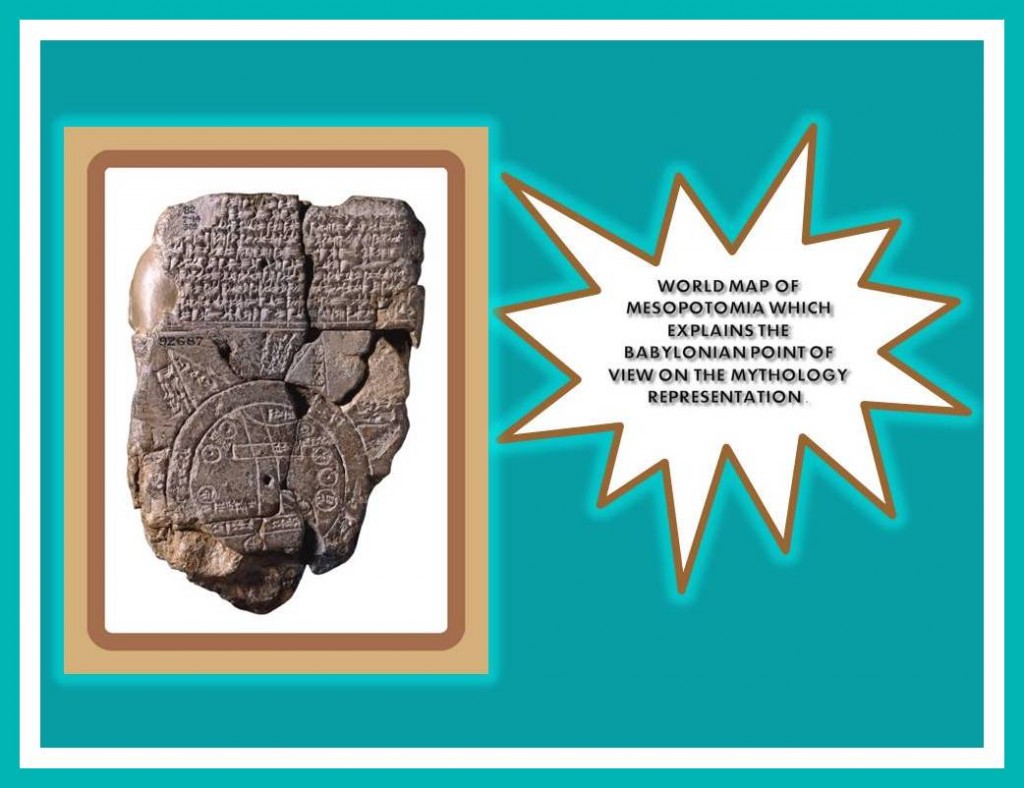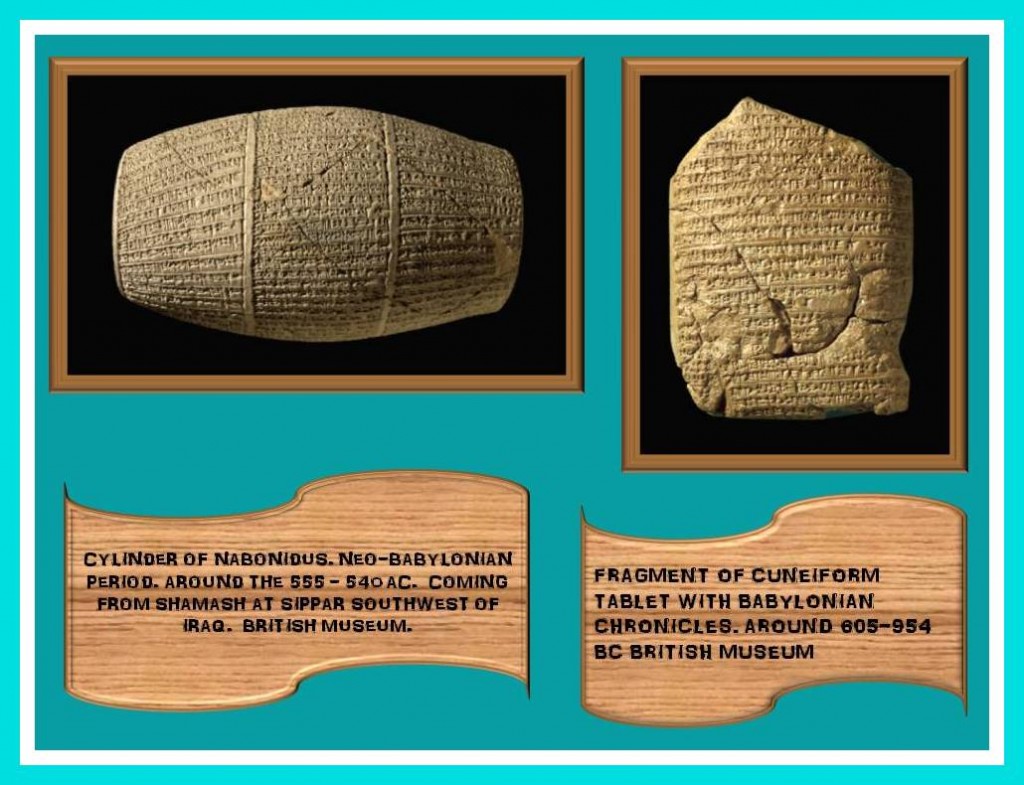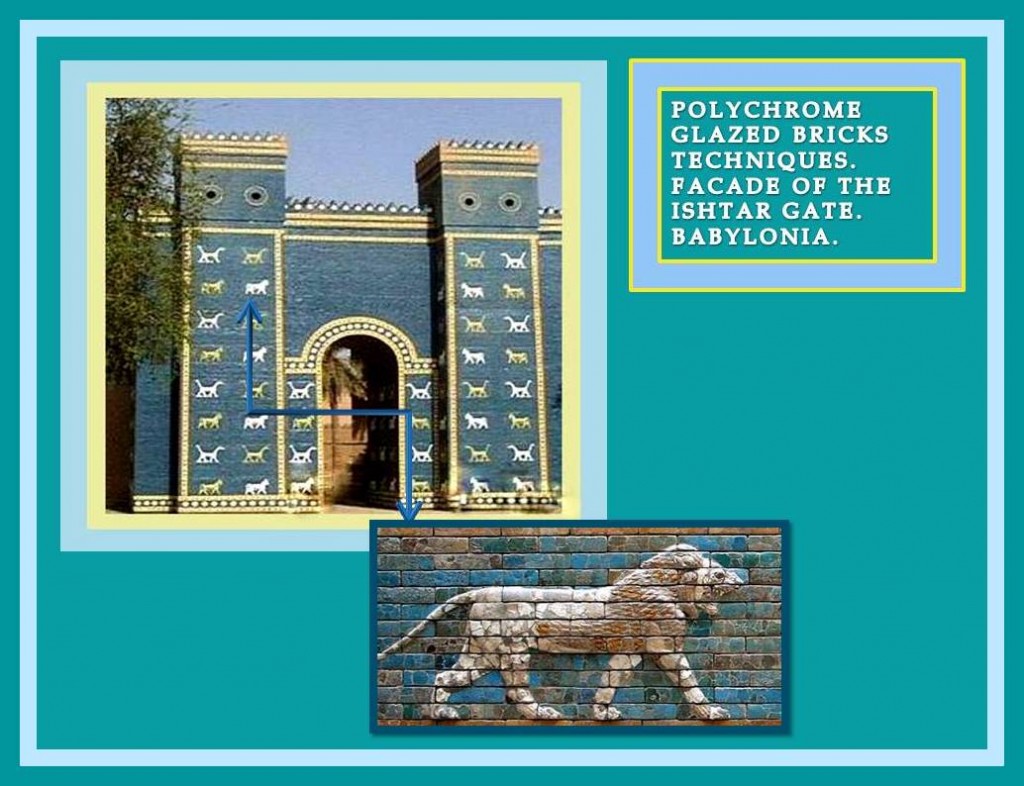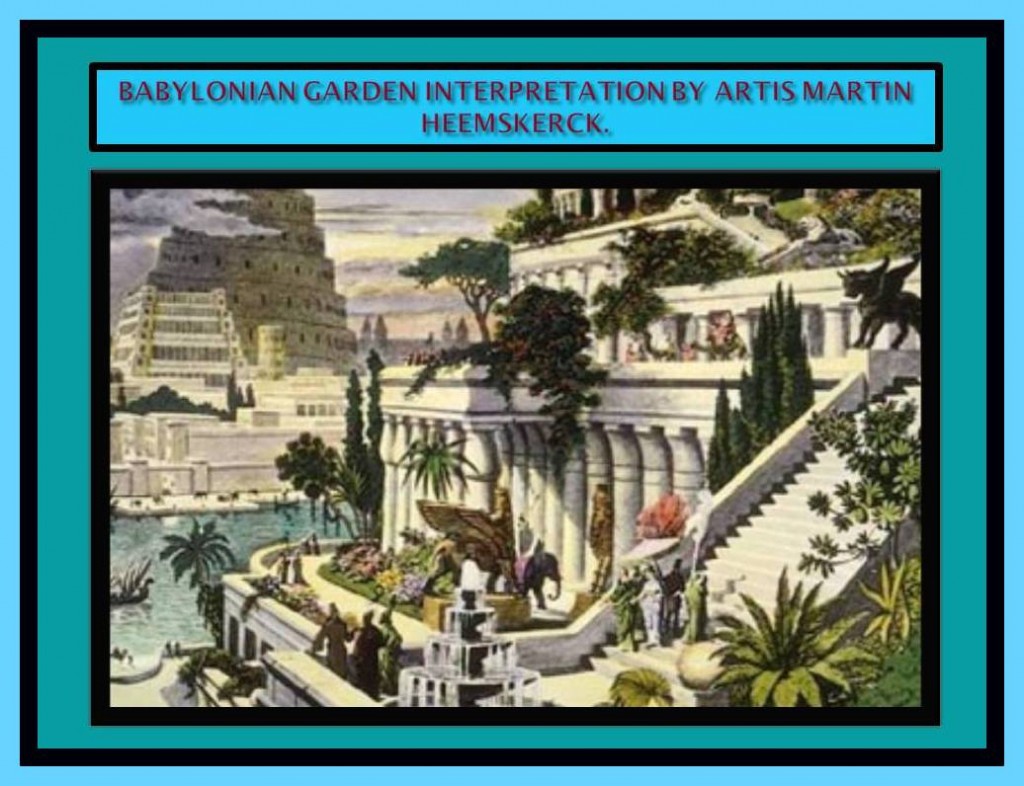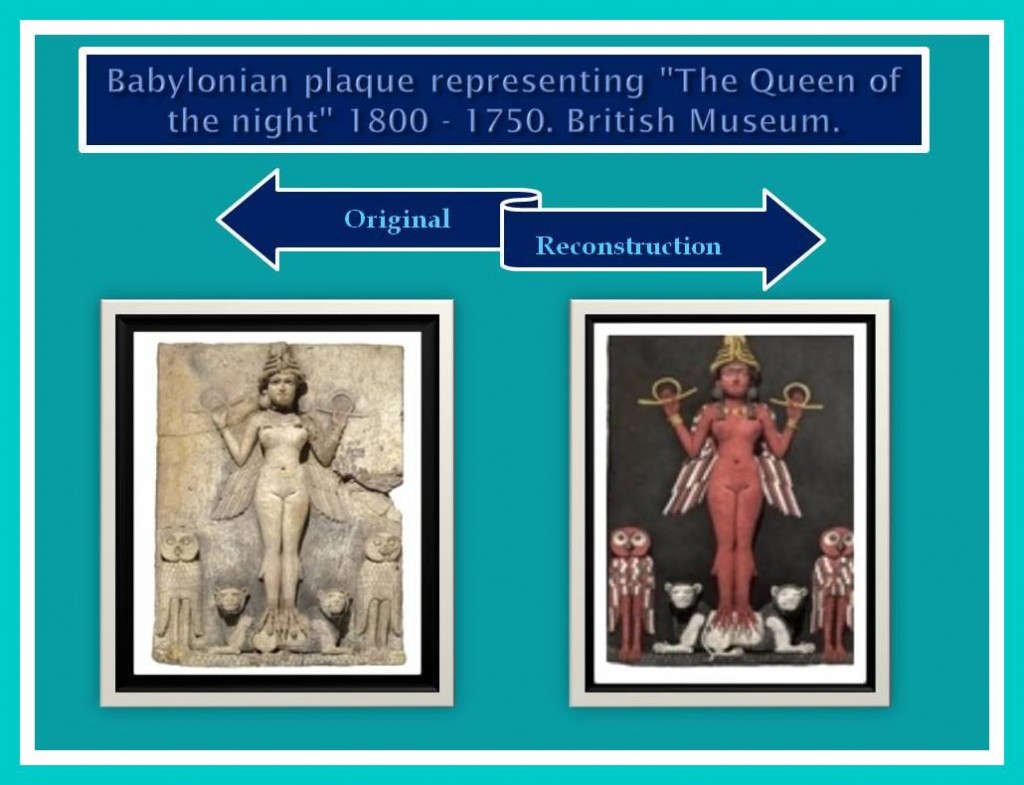Babylonia
The Babylonian Empire was one of the great empires that dominated the region of Mesopotamia. Many aspects that were unknown about this people were finally recent exposed, thanks to the work of archaeologists and specialists who managed to decipher the information contained in baked clay tablets and other inscriptions. In the tablets they had not only written about their own history and art, they refer as well about important aspect in the life of the entire region of Mesopotamia and the cultures with whom they had a broad contact. Babylonians write about almost anything; which is very fortunate for us today, otherwise the memories and important knowledges of that ancient civilization would have been forgotten.
Rise and location of Babylon city the one who become a prosper Empire.
Babylon was located in what is now the Iraqi region. To this land under the control of Sumerian arrived Semitic tribes like the Acadians and the Amorites, from groups of a country called Martu. This event indicates the decline and fall of the III dynasty of the Empire of Ur and the birth of the Babylonian Empire, which would develop, intermittently until 539 BC. The Amorites were able to impose their dynasties in Mesopotamian cities and the most important of then became Babylon, (Bávilou, means “gate of God”).
The city, occupied by the Amorites King Sumuabum (1894-1881 BC), founder of the new dynasty, became a great political, religious, economic and cultural center. His four successors, created the most important Amorite Kingdom in the region that would reach its maximum splendor with the figure of Hammurabi, most important King of the first dynasty of Babylon, which spanned the years 1792-1750 BC. He cemented and forged the bases of the Babylonian Empire.
During his reign he established as official the Acadian language, and as religion worship the cult to the God Marduk. Hammurabi turned the city into a major religious center. With its mandate, the city of “Babirum”, Babylon, (the Babel cited in the Bible) acquired great power, becoming the capital of a new empire whose domain and influence would cover the entire region of Mesopotamia.

The King Hammurabi order the construction of several temples, some of then of larger proportions destined to honor the principal gods and others of lesser size and importance for the minor gods. He promulgated a code of 282 laws, which he claimed received from the God of the Sun, Samash (God governing justice), along with the scepter and ring, symbols of Samash. These so-called laws were rather provisions of the will of Hammurabi, and among these is the famous law of retaliation “eye for an eye”. He order to write in seals and baked tablets horrendous curses for those who dare not to accomplish his ordenances or laws.
These laws known as (the code of Hammurabi) were wrote in a column of stone and influenced the civilizations of the Near East even after the death of Hammurabi and even until after the Hittites end this first civilization of Babylon in 1595 BC. These laws were later adapted over time to the biblical texts.
Importance of the Babylonian mud tablets and seals to understand this ancient civilization.
During the first Empire increased the production of cylinders to seal the documents using cooked mud clay tablets were the records and accountability was kept. Numerous texts produced in this method of cuneiform writing have been rescued from Babylonian culture which have provided invaluable information that could document aspects of its history, traditions and culture. Many of these texts were stoled by Assyrians hands during the conquest of Babylon; they even brag about the quantity of cuneiform texts they possessed that had managed to snatch from the Babylonians.
About the content in the Babylonian clay tablets
In the cities of Mari and Ebla were rescued s 1700 or more clay tablets conteining trade data and customs of the region like traditions and festivities. Thanks to these tablets is has been know that the product exported mostly were tissues and that large amounts of gold and silver that came from the tributes under their rule cities were available for use both in the maintenance of the cities and of the army and military campaigns.
Spoken in those tablets is the story of persecutions which were organized to retrieve the escaped slaves, as well as the taxes that had to be paid for transporting the goods by the Euphrates River. Important are the tablets that narrate about their kings, political issues, heroes, wars and divine beings. The economic activity of this people, the tools they used, agricultural techniques and general knowledge about ciclos and seasons more convinient for the agriculture and other activities were also expressed.
They accomplished impressive results in medicine in the way to control the increase and spread of diseases. The treatments for them were based on the resources that nature offers. But; although they were not available to know how to practices surgery the list of substances with pharmacology use they have was quite impressive, as well as the treatment to use them and all this information was writing in the cuneiforme scriptures they lef behin in the tablets many of wich had not been yet decipher or recovered.
The preferred theme in relief is that of the legend of Gilgamesh, a hero of an old Mesopotamian epic, depicting him in fight with buffaloes and Lions. This popular topic in Mesopotamia was addresed widely in Babylon, as was previously used in Sumer, place in which this legend originaly rised. It was also narrated in Assyrian mytology as well.
Culmination of the first Babylonian Empire and rise of the neo-Baylonian period.
With the death of King Hammurabi, his successors had to face the pressure from the Kassites tribes; that conquered the area from the South around 1600 BC, he also fought the revolt of all the South of Sumer, and finally, the attack of the Hittites that were sent by Murshil I.
The first Babylonian Empire after all these events decays and the elimination of the amorrita dynasty occurs as a consequence giving culmination to this first Empire. A period of warring succeeded where struggles for power and territorial control mainly continuous for many years were struggles and intrigues between Assyrians and Babylonians essentially dominate the events.
Babylon is occupied by the Assyrians for a relatively long period and conflict and instability continued also later when the Chaldeans came to conquer the cities of Babylon, emerging then what is known as Chaldean or neo-Babylonian dynasty, this is considered the latter splendor of the Babylon culture.
In this neo Babylonian period are produced great variety and splendor in artistic representations which would have its continuity until the fall of the Empire. During this long period beginning in the year 2000 B C are observed some artistic progress of great importance for the history of art.
Architecture
Among of this artistic progress it can be identified the improvement of use given in architecture to the arch and the dome during the Babylonian Empire; they were already used previously but was perfected during the Neo Babylonian Empire. This is the time of the construction of the fabulous palaces of Nebuchadnezzar.
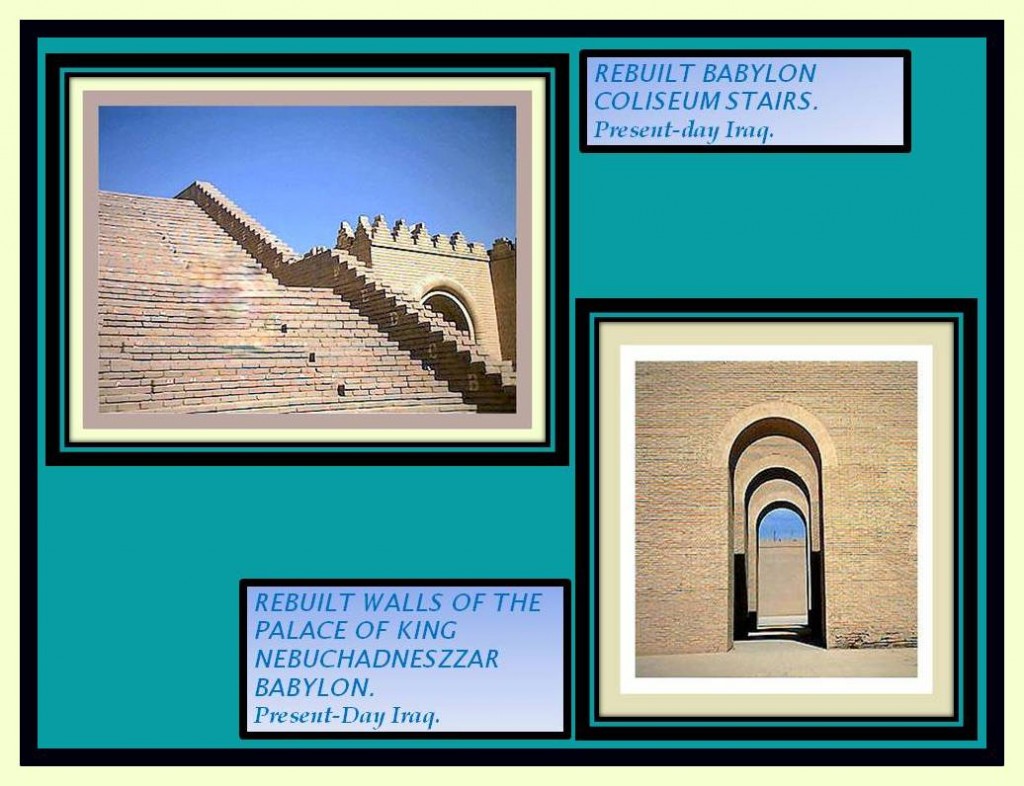
Features of art in Babylonian culture are closely related to building materials available in their environment. The stone was scarce of course but the mud, abundant. Barely existed corpulent trees to build the beams needed to use them effectively in the construction of architectural structure. Following these limitations, the buildings are essentially cemented with very similar stone brick and adobe as the Sumerians did. The arch and the dome roof are used mainly in the construction of large palaces.
The adobe was used for terraces and thick external walls. The walls were made of adobe or molded bricks (whose rear mounting made it possible to build huge walls. Large ceramic reliefs made in terracotta and stone pieces containing in some case inscriptions were used, receiving the name of kuduroes this were stone blocks, generally in black diorite, which were intended to delimit farms.
The inscriptions made in this stones to describe the boundaries of the property are intend also to throw terrifying spells for those who try to change or alter their limited boundaries. The images of the gods or animals representing them are carved in the relief so that they are more imposing to the offenders who try to invade the property.
In Babylonian architecture is observed essentially simplicity in the design of the structures due to difficult terrain and poor materials.
The Hanging Garden of Babylon
There is a know legend about the splendor of a high building know as the “Hanging Garden of Babylon” and it appear to have been more a building with terraces in which many plants were cultivated. Those gardens did not really hang in the sense of being suspended from ropes or anything like that. Appear to be a misunderstandings from translation that set the legend as have been told trough times. Since not proper reliable documentation are at hands; have not been yet clarify the facts about this mythical building with a garden and even is really existed at all.
Recent theories by and Oxford University especialist who had studied different source of bibliographies inclusively recently ancient baked tablets found and escrutining diverse historic and geographic facts are appointing that, those mytical Babylonian Gardens were not probably even in Babylon are all, because this location have a very flat configuration, been almost imposible to irrigate enough and constantly the big trees and plants. They are analizing other possible places more close to natural water resourses that are outside the limits of the Babylon city.
Follow the link for more information about this recents studies. Babylonian Gardens in Ninive.
There is nevertheless an interesting description from the Greek geographer Strabon. He described the gardens around the first century BC and wrote:
“It consists of vaulted terraces raised one above another, and resting upon cube-shaped pillars. These are hollow and filled with earth to allow trees of the largest size to be planted. The pillars, the vaults, and terraces are constructed of baked brick and asphalt.”
Babylonian Sculpture
Artist represented the stories of some legends in magnificent relief. They also did geometric figures with designs that paralleled a bit in some cases the ones inherited from Sumer and others novels designs that were adapted to the physical space that was decorated with exotic plants, fantastic creature, animals, battles scenes and others mundane thematic.
Narrative and sequential designs in buildings whose fragments are preserved have provided important data about the history, traditions and conception of life of the Babylonians, but also about the region of Mesopotamia in general. They use the Alabaster (a soft stone that abounded in the upper part of the River Tigris); with this stone they carve large plaques with decorating reliefs in some notable buildings. Those cuneiform writing sketch were part in many cases of the decoration contributing to the narrative of the scene. Especially in the large horizontal surfaces of the walls of the palaces they placed plaques telling chronicles of battles, victories and hunting scenes as well as often the theme of the tree of life which also appears on cylinder seals.
The subject of the reliefs was almost always profane. The scenes showing the pleasant life in the Palace were in interior walls while at the external abounded most of the theme of hunting, war encounters heroic stories that praised the figure of the King and epic legends.
Round sculptures had in some cases gigantic proportions and were mainly placed on the doors of the palaces, as guardians or protectors. Some figures are representing the human figure with animal’s part, winged Sphinxes and Lions. This sculptures were very similar to the one represented in Assyria and Sumer.
Painting
As well as in sculpture relief in painting manifestations the idea of perspective is still quite primitive and figures do not show the balance of the proportions between objects and the figures illustrated. This aspect applies both to the human and the animal figure. In general the artist enlarged characters they are interested in and so that the figure of the King is represented largest, followed in size progressive by important figures representing the power after the King and ending with the subjects of smaller status or rank..
Important remnants of decoration in painting found at the Palace of Mari, which they decorated the Hall of audiences, the Royal courtyard and other rooms of the residence, show fragments that can distinguish four types of scenes.
Five of the most frequent scenes shows in Babylonian painting are:
1. Mythological character.
2. Belligerents.
3. Episodes of offerings.
4. Sacrifices.
5. Presentation or investitures.
The head of the characters is showed turned to the side even though the person was from the front (frontality). The inexpressive faces were like those of other regions of Mesopotamia and Sumerian culture. These figures are also presented in many cases large sketched eyes. Beards, curly and long hair, the embroidery of the robes and dresses strips show attention to detail making a fairly accurate representation of what was represented to contributing to a more effective communication of the message that surprises for its similarity to reality. The bricks used in the construction of buildings were cover with ceramic colors (fired clay glazing) or with white stucco which were paintings al fresco with the porpoise of decoration.
Babylonian Religious Belief
They built great monuments to adore their many gods as it is the case of the temples whose buildings in the form of terraced towers surpassed a total height of 100 meters. The temples also possessed decorations in relief telling important aspects relating to the cult and the deity to which is dedicated a tribute primally on the walls of the main halls. They need as other ancient civilization the urgency of been protected from the climact change and natural disasters, they claim to the gods for good outcome in battles and the religion serve a purpose as well as justification for the slavery and the respects and servility toward the figure of the king.
More information is provided about the Babylonian’s religious belief and also their Myth and legends in the article posted by petition of one of the visitor who wanted to know more about this thematic.
Most important gods represented in these Babylonian temple:
- ANU: during the more ancient times was the main God. He is the God of the sky.
- Enlil: he is the son of Anu. Carrying the tablet of the destinations that controlled the future of all beings as was Babylonian believe. He ended up replacing his father as King of the gods.
- EA (or Enki): is the God of magical knowledge, which controlled the fresh water for agriculture in Mesopotamia. He was also responsible for teach humanity occupations.
- Marduk: son of Ea. He was the Chief God of Babylon. He became King of the gods for the Babylonian Empire, also in other regions and cultures of Mesopotamia.
- Ishtar: she is the goddess of love. With various names, she was known throughout Western Asia, becoming the most popular goddess of the Mesopotamian pantheon.
- NABU: God of wisdom and patron of scribes.
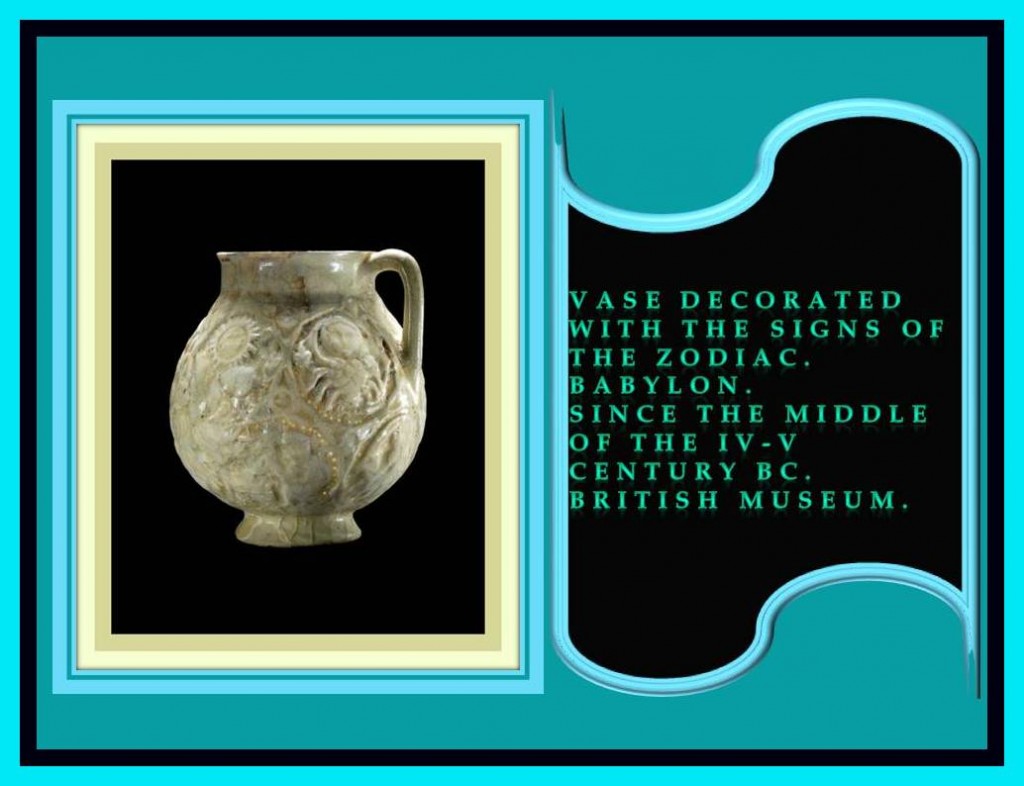
Unfortunately as a result of conquest and destruction of the cities and also the deterioration with time and erosion by environmental conditions, many of the works of art of this Babylonian culture were destroyed, but those which have been saved outlined us an important image of the general characteristics of their culture in these ancient cities.
Please visit the two other articles about Babylonian culture to have a more complete picture of the importance of this ancient civilization whos knowledges is so important for us today to understand many aspects of the human life history.


